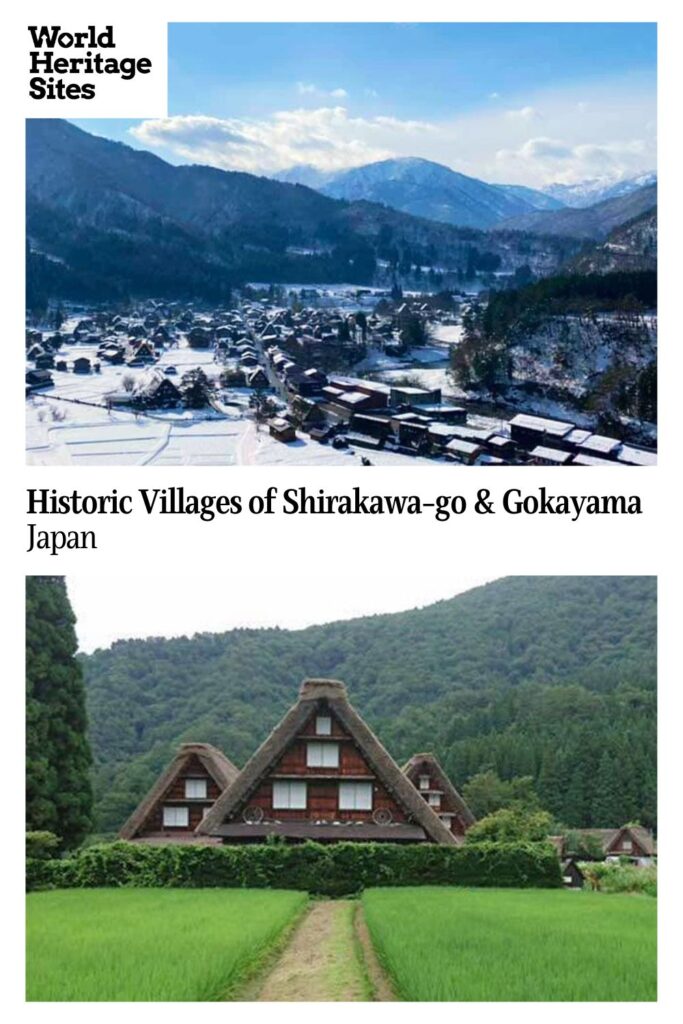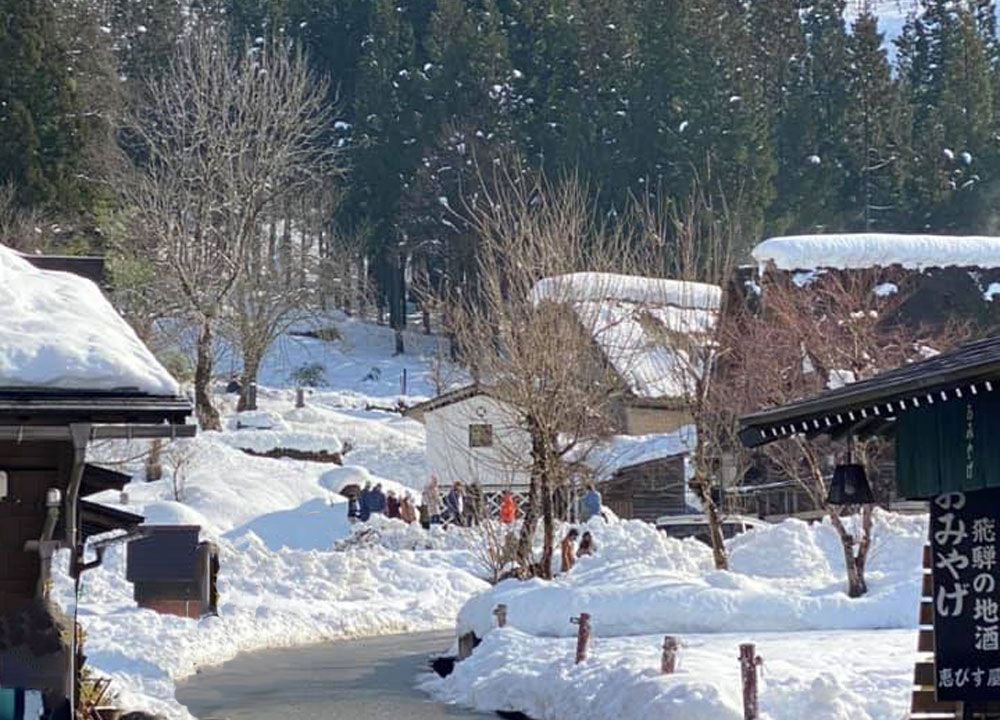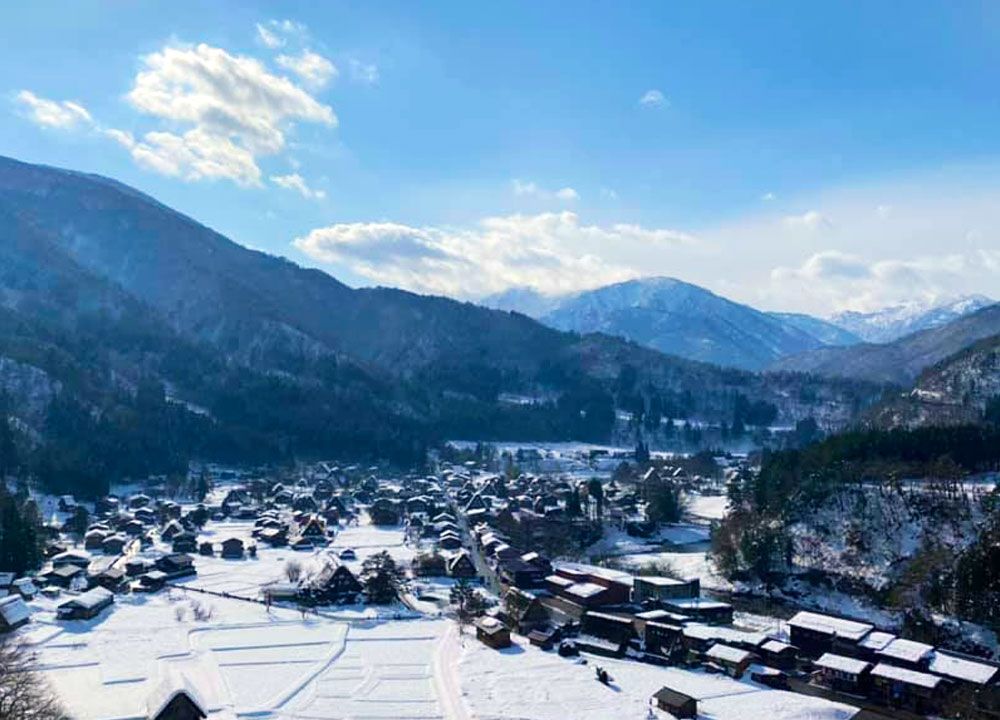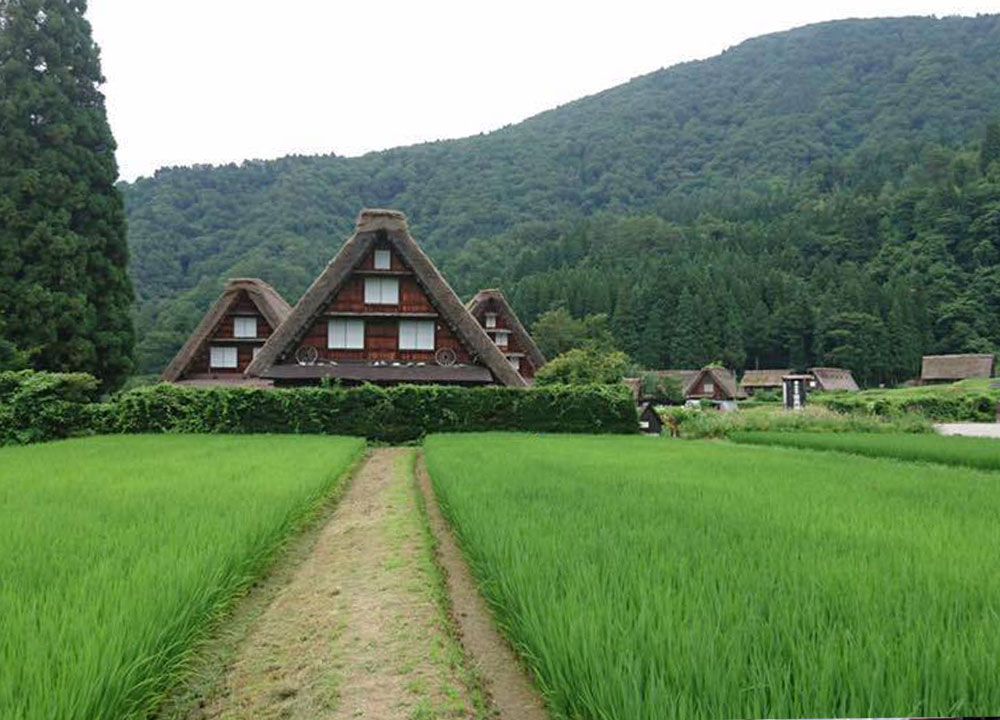Historic Villages of Shirakawa-go and Gokayama
By Bernadette
What are the Historic Villages of Shirakawa-go and Gokayama?
This UNESCO site is comprised of three villages: Ogimachi, which is in the Shirakawa-go region, and Ainokura and Suganuma in the Gokayama region. These villages in the mountains of central Japan have preserved their traditional way of life. In the past, because of their mountain location, the villages were largely cut off from the rest of Japan. Their inhabitants lived in tune with nature in their unique farmhouses and continued the time-honored way of making silk.
Disclosure: This article contains affiliate links. Making a purchase through an affiliate link will mean a small commission for this website. This will not affect your price.
The shape of the farmhouses is meant to look like hands in prayer but also serves a practical purpose: the steep roofs keep the snow off in the winter, and the homes were positioned to lessen wind resistance to help keep them cool in the summer. In the attics, silkworms were cultivated under the thatched roofs.

Why are the villages of Shirakawa-go and Gokayama UNESCO World Heritage sites?
UNESCO designated the villages as a World Heritage site in 1995 because of how they were able to retain the culture and the unique architecture of the area. According to the UNESCO website, “These villages with their Gassho-style houses subsisted on the cultivation of mulberry trees and the rearing of silkworms. The large houses with steeply pitched thatched roofs are the only examples of their kind in Japan.” Additionally, the social structure remains strong and “As a result they preserve both the spiritual and the material evidence of their long history.”

What can you expect on a visit to Ogimachi, Ainokura and Suganuma?
The villages are living museums where travelers can visit some of the homes to see silk making, the traditional life of the villagers, and the incredible scenery that is worlds away from the bustling cities of Japan.
It takes about three hours to see the villages, which is perfect for a day trip. A trip in the winter will show the mountains and villages covered in snow for dreamy views. In contrast, the rest of the year is full of vibrant greens and nature-filled sights.
The mountains are also home to hot springs that are a welcome end to a trip for some relaxation after a day of touring.

Are the villages of Shirakawa-go and Gokayama worth visiting?
If you like to learn about different cultures, then yes, it is worth visiting Shirakawa-go! It shows another side to Japanese culture with its food, architecture, and way of life.
Take a look at the other UNESCO sites in Japan.
What sorts of travelers would like the historic villages of Shirakawa-go and Gokayama?
People who like museums will love the villages because they are living museums where it is possible to see what life was like in the 1800s. Travelers who enjoy being in nature will also like the lovely setting with its mountains and hot springs.

Tips for visiting Ogimachi, Ainokura and Suganuma
Ogimachi is the village that is most set up for tourism, and is advertised simply as Shirakawa Village. Those who want great pictures should head to the observation deck that overlooks the village. It is a short hike up the hill, so be ready with the proper shoes. Winter is also good for epic pictures if you can brave the snow and cold.
Use this link to find accommodations in or near Shirakawa-go.
Suganuma and Ainokura are smaller and less touristy.
Try the food! They have their own mochi with a miso glaze, Hida beef croquettes, and Doburoku sake.
Join a day trip tour for a hassle-free trip. It is easier than figuring out train and bus schedules.
Where are the historic villages of Shirakawa-go and Gokayama?
Shirakawa-go is located in the Gifu Prefecture in central Japan. If you travel by car, use the public parking lot as your destination – Seseragi Park Parking Area 2495 3 Ogimachi, Shirakawa, Ono District, Gifu 501-5627, Japan.
Public transportation is available, and there are many bus and train options. It takes around four hours from Tokyo and Osaka, three hours from Nagoya, and an hour from Takayama. Check out the multiple ways to reach the villages here.
If you’re going to be traveling around Japan by train, consider buying a JR pass before you go.
For more information about the historic villages of Shirakawa-go and Gokayama, their opening hours, and admission fees, see their official website.
Have you been to any of the Historic Villages of Shirakawa-go and Gokayama? If so, do you have any additional information or advice about this UNESCO World Heritage site? Please add your comments below!

